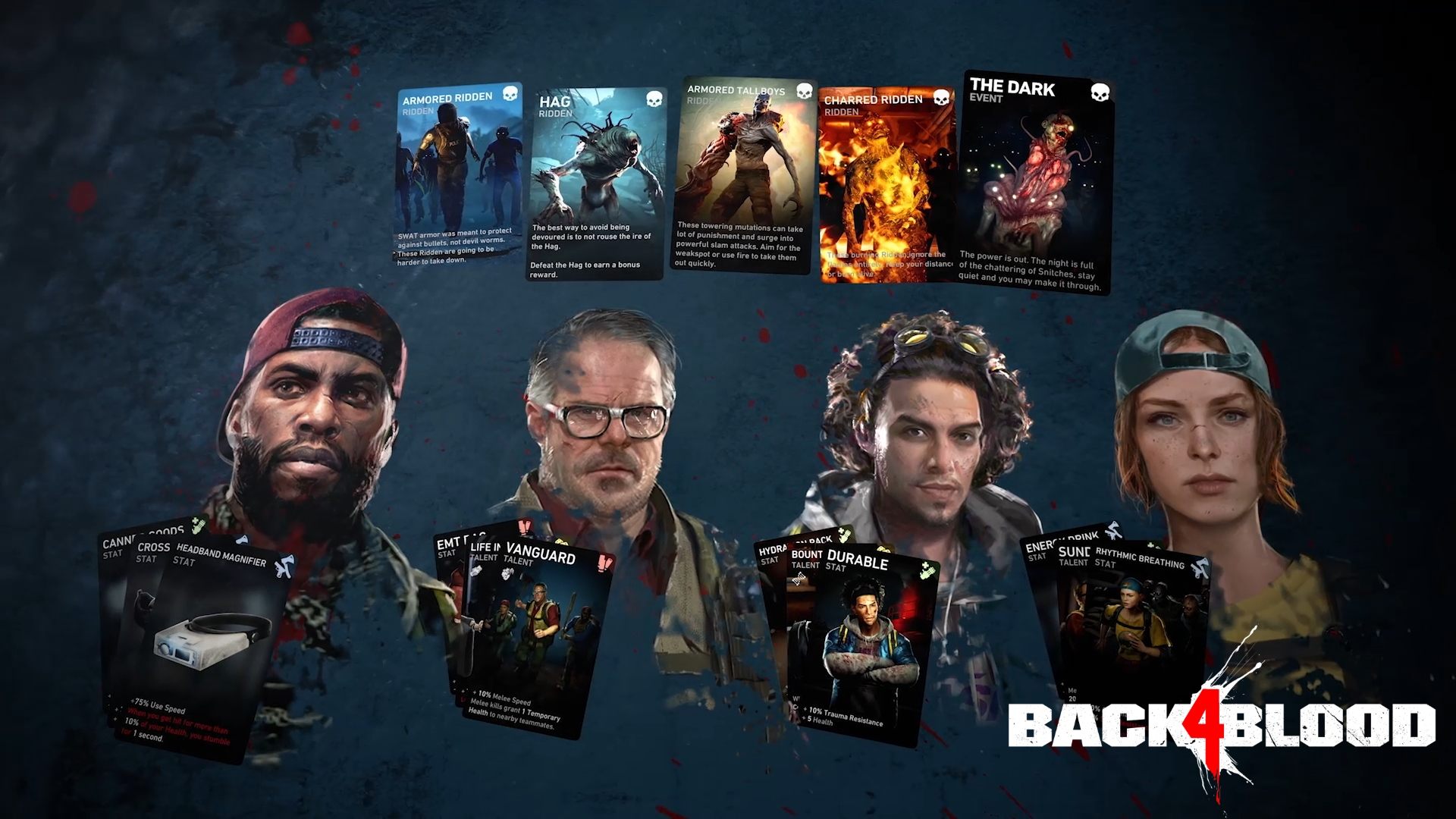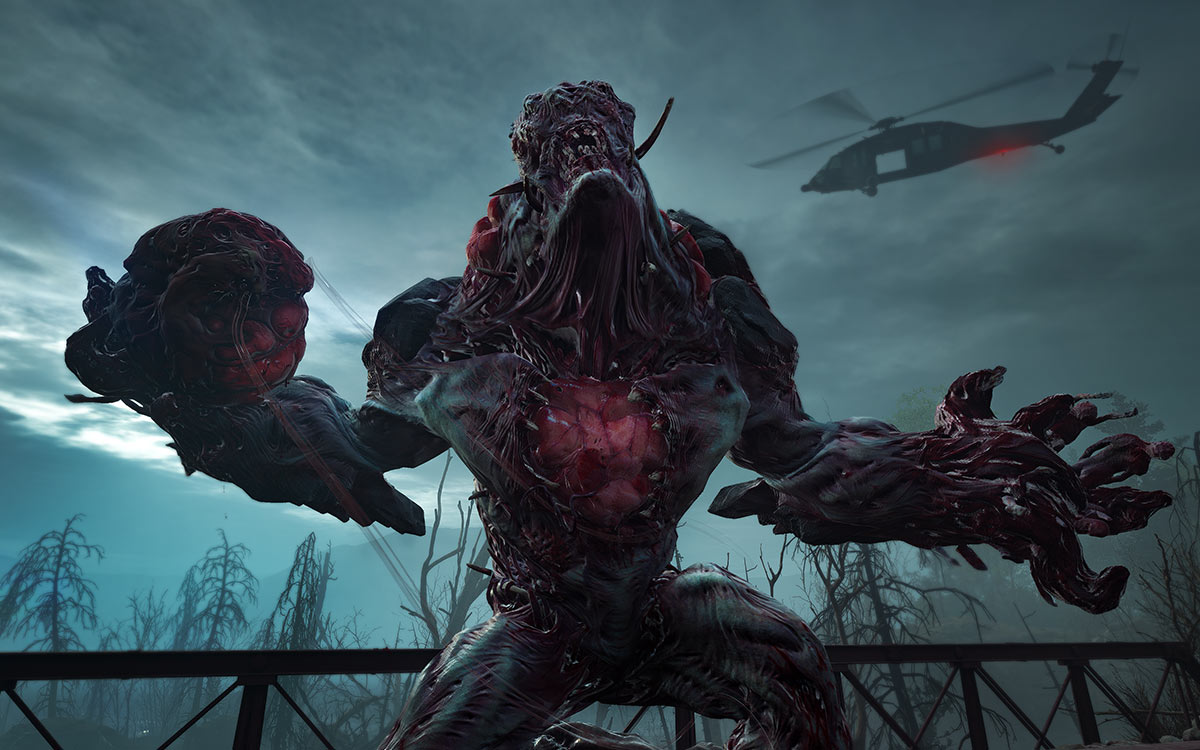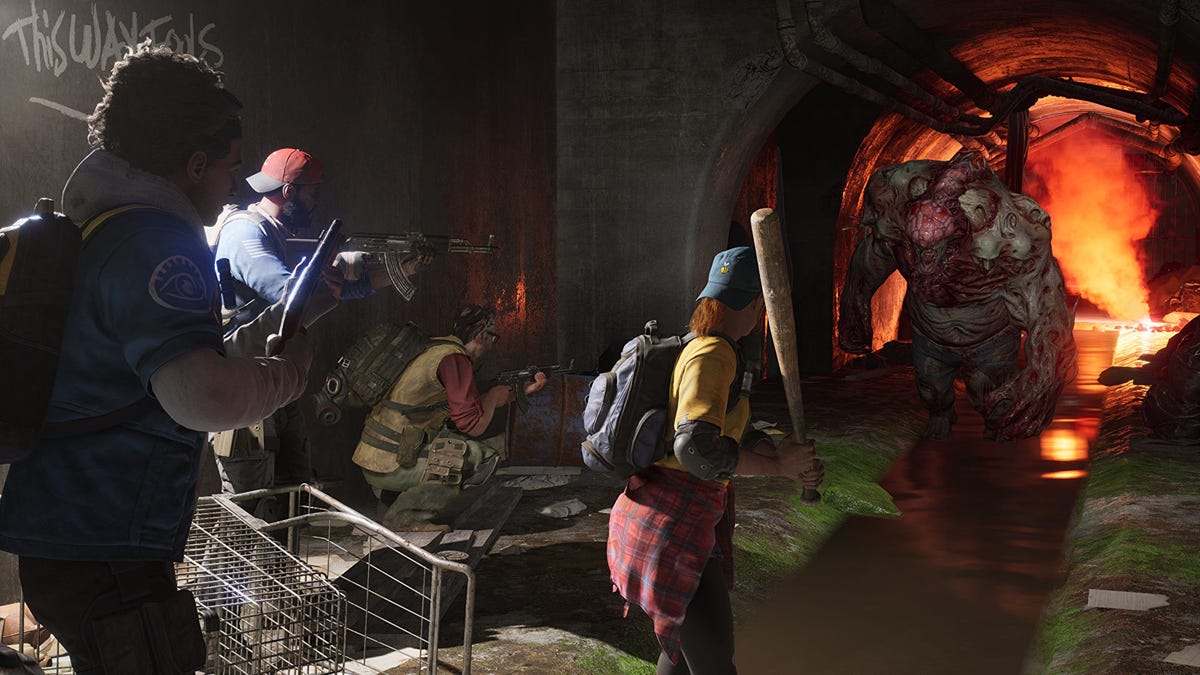

Additional cards can be unlocked by acquiring Supply Points and spending them at Fort Hope, the game’s social space. It’s an intelligent, robust and unique system that allows players to craft and tailor the experience to their favorite playstyles. These bonuses range from simple upgrades like health increases and faster reloading to more specialty-focused ones like gaining health for each melee kill. Before every mission, the game draws five cards and allows you to pick one to add to the list of already played cards and stack its bonus on top of the others. In Back 4 Blood, you’ll earn cards that provide different bonuses and can be configured into a deck. Some are short and sweet, others can take some serious time, but all-in-all, Back 4 Blood is an easy game to pick up and play in short bursts.īack 4 Blood separates itself from Left 4 Dead by creating replayability through its deck-building system. In total, 33 missions of varying length add up to anywhere between 8-10 hours your first go around. It’s a proven formula that has kept both Left 4 Dead games popular a decade later. A team of four people spawns into a safe house, prep for the upcoming level, exit the safe house, do battle with the Ridden, maybe complete an objective, and then make it to the next safe room. In this way, Back 4 Blood is a lot like Left 4 Dead.īack 4 Blood further shares its DNA with Left 4 Dead regarding the core gameplay loop. While it would have been nice to have a stronger narrative or a focus on the characters, the campaign does at least serve its purpose and gets out of the way quick enough for the game’s other elements. The story merely serves as a backdrop to get players into the world to take down the Ridden. It’s clear that Back 4 Blood’s campaign is mostly here to facilitate the main pillars: co-op, gameplay and replayability. Each of them has some lively banter during missions, but the story’s structure prevents them from becoming anything more than the player’s avatar during missions.

Mom is the tough-as-nails leader who doesn’t take crap from anyone Walker is the grizzled soldier Doc is the nerdy scientist, and so forth. Each of the eight playable characters fits a common stereotype seen in most zombie media. The characters themselves are personable, if not predictable. Mysteries such as the virus’s origin, what happened to Mom’s son and others are either not touched upon or only discoverable via intel found throughout the levels. Outside of a few beautifully-produced cutscenes and banter in safe houses, Back 4 Blood is light on story. Despite marketing that suggested story would play a role in Back 4 Blood, the game features little narrative content. Worried about an upcoming war, General Phillips enlists the Cleaners, a group of 8 immune individuals, to help push back the looming threat. Is Back 4 Blood a worthy successor to its forebear or is this blood not worth coming back for?īack 4 Blood takes place following an outbreak of a parasite that infects the majority of humanity and turns them into monsters dubbed the ‘Ridden.’ After months of low Ridden activity, a horde of the monsters suddenly appears, threatening the uneasy peace of a small town.

That game is Back 4 Blood, which borrows much of its foundation from Left 4 Dead while making innovations itself. Now, the studio has gone back to its roots, developing another four-player co-op zombie shooter. Afterward, Turtle Rock Studios would do their own thing, developing the mediocre Evolve and several Oculus games. A four-player co-op zombie shooter, Left 4 Dead cemented itself as a top-shelf title thanks to great mechanics, a suite of excellent co-op options and innovations in AI that led to high replayability. Valve South at the time) released a game called Left 4 Dead.

Back in 2008, Turtle Rock Studios (a.k.a.


 0 kommentar(er)
0 kommentar(er)
